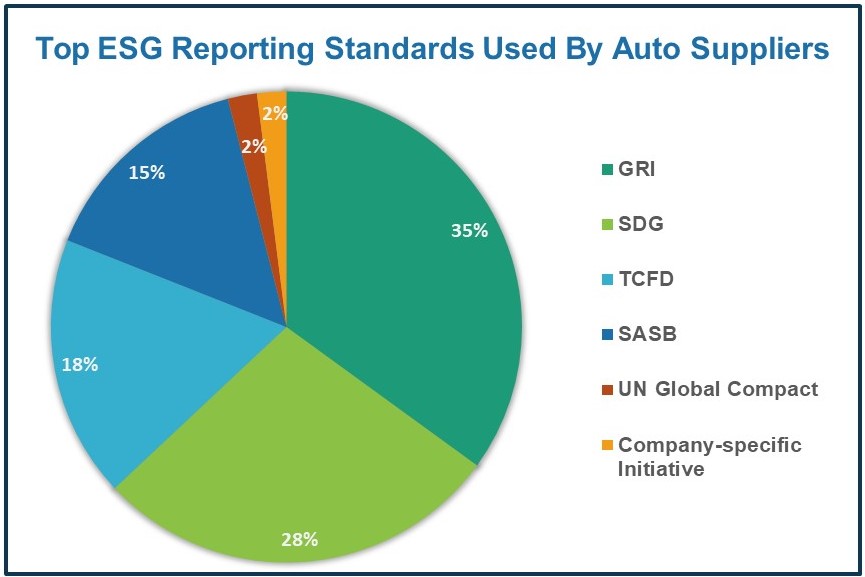880 W. Long Lake Road • Suite 225 •
Troy, Michigan 48098
• P: 248.269.1122 •
E: bianchipr@bianchipr.com

As mentioned in our recent Three Reasons ESG Communications Are Crucial for Automotive & Vehicle Technology Suppliers blog, ESG (environmental, social, and governance) reporting is rapidly becoming the hottest trend for mobility, automotive and vehicle technology suppliers. It’s moved beyond just being a trend and is becoming an expectation.
For PR practitioners, NOW is a crucial time to establish your seat at the ESG reporting table, providing support, counsel and strategic insight on how your company’s evolving ESG efforts are communicated and publicized.
For those looking to arm themselves with key data and insight for when they garner that seat, let’s establish the key components found in the “typical” automotive supplier’s ESG report.
To get this baseline, we studied the ESG reporting habits of the top 25 North America automotive suppliers (according to Automotive News’most recent Top Suppliers Listing. Using that list and delving into each supplier’s website, we discovered that 21 of the top 25 suppliers (84%) reported on their 2020 ESG efforts in either an ESG, Corporate Social Responsibility (CSR) or Integrated Report.
Surprisingly, four of the top 25 automotive suppliers – 16% – did not issue an ESG-related report for 2020.
Here are five other key insights into the “typical” automotive supplier ESG report:
Insight 1: The average ESG report is 89 pages in length.
The reports we analyzed ranged from 19 pages on the short end to 324 pages on the long side, with an average of about 89 pages.
Depending on the format of the report, as well as each given company’s use of images, the amount of content on each page also differed vastly. Here’s a more detailed breakdown:
Insight 2: Sustainability reports are most common.
Given the relative newness of ESG communications in the automotive sector, top auto supplier companies are approaching reporting in different ways, ranging from specific reports that focus on sustainability or corporate social responsibility (CSR) efforts to incorporating ESG data in an integrated annual financial or group report.
Here’s where North America’s top suppliers reported their efforts:
Insight 3: Top automotive suppliers use a variety – and often more than one – reporting standard and/or initiative.
These is a lot of lingo or specific terminology that is associated with ESG reporting (be sure to check out our next blog post that sheds light on the most common terms) and a good deal of this jargon revolves around the acronyms for reporting standards and initiatives.
In reviewing what standards these top suppliers used to report their ESG efforts, we found that there is no single commonly accepted standard for ESG reporting. In fact, 62% of auto suppliers use more than one standard/initiative in their reporting efforts.
The most popular ESG standards used by the top North American auto suppliers were:
Insight 4: Supplier ESG reporting is more than discussing ideas – it’s also goal setting and measuring progress toward those goals.
While much of the reporting effort was dedicated to discussing the given supplier’s ESG efforts, more than half of the top automotive supplier ESG reports included goal and metric information.
That’s a key point, as the old business adage reminds us, “What gets measured, gets improved.”
Insight 5: Most reports share a few other common components.
During our research, we noticed a few other common components that PR practitioners should keep in mind when approaching an ESG reporting project:
4% were found under a special tab named for the supplier’s own initiative
If you’d like to learn more about the benchmarks of automotive supplier ESG reporting or obtain insights on how your company’s next ESG communications can be enhanced, keep following this blog for future posts about this unique study. And if you have a specific question? Shoot us a note at bianchipr@bianchipr.com.

Author: Adriana Van Duyn
Adriana is an account supervisor at Bianchi PR with 17 years of B2B PR experience representing clients across multiple industries.
You might also be interested in: